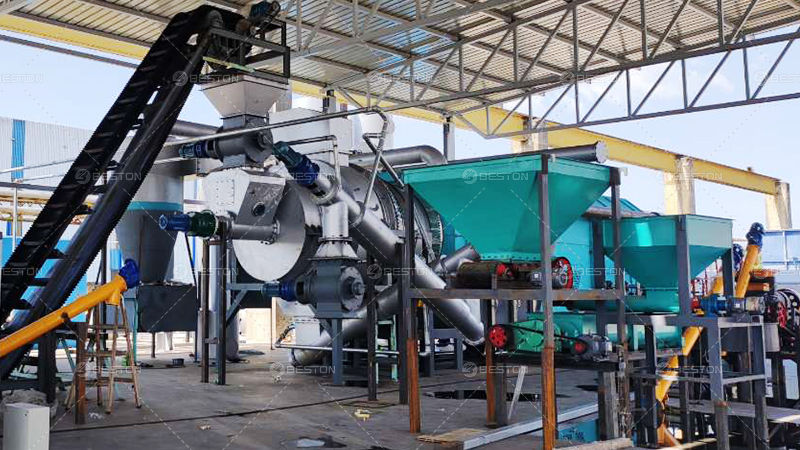Steps to Obtain Certification for Biochar Production Equipment
- wastetoenergy
- Dec 24, 2024
- 4 min read
Biochar production equipment plays a significant role in sustainable agriculture, carbon sequestration, and environmental protection. As interest in biochar grows, manufacturers and operators are seeking certification under the Carbon Development and Reporting (CDR) Project. Certification ensures that biochar production adheres to stringent environmental standards and contributes to carbon sequestration efforts. To achieve CDR certification, there are several steps involved, each requiring meticulous documentation, verification, and adherence to established protocols.
Understanding CDR Certification Criteria
The Carbon Development and Reporting (CDR) Project is a recognized framework designed to verify the environmental impact of carbon removal technologies. For biochar production equipment to be certified, it must meet a series of specific criteria that demonstrate its ability to reduce carbon emissions effectively. Key factors for consideration include the efficiency of carbon sequestration, the energy consumption of the production process, and the long-term stability of the produced biochar in soil.
Biochar has gained recognition due to its potential to sequester carbon for hundreds to thousands of years when applied to soils. The CDR certification process evaluates how well the biochar production equipment contributes to these outcomes, ensuring that it provides a net environmental benefit. Certification is not only important for environmental compliance but also enhances the credibility and marketability of biochar products.

Step 1: Assessing Biochar Production Equipment
Before applying for CDR certification, biochar production equipment must be thoroughly evaluated to determine its suitability for meeting the required standards. This involves reviewing several factors:
Carbon Conversion Efficiency: The equipment must efficiently convert biomass feedstock into biochar, maximizing carbon retention and minimizing emissions.
Emissions Control: The production process must limit emissions, ensuring that gases like CO₂, CO, and volatile organic compounds (VOCs) are minimized or captured effectively.
Energy Usage: The equipment must demonstrate low energy consumption, or alternatively, the energy generated during production should be used to power the system itself, minimizing the carbon footprint.
A comprehensive performance evaluation of pyrolysis machine for biochar can be conducted through third-party assessments or internal audits, ensuring that it meets the technical standards for CDR certification.
Step 2: Data Collection and Monitoring
Certification under the CDR project requires extensive data collection and monitoring throughout the biochar production process. This data must be documented and submitted as part of the application. The information typically required includes:
Feedstock Type and Quality: Detailed records of the feedstock used (e.g., agricultural waste, forestry residues) should be provided, along with its carbon content and other relevant properties.
Production Process Parameters: Information about the temperature, pressure, and residence time during the pyrolysis or carbonization process should be recorded.
Carbon Sequestration Potential: It is necessary to demonstrate the carbon sequestration capacity of the produced biochar. This can be determined by calculating the carbon retained after production and estimating its permanence in soil.
This data will be essential for third-party verification and audit purposes, which are integral to CDR certification.
Step 3: Third-Party Verification
To ensure transparency and credibility, CDR certification requires verification by an independent third party. This process involves an external audit of the biochar production process and the collection of supporting documentation. The third-party auditor will assess the following:
Compliance with Standards: The biochar production equipment and process must align with the specific requirements outlined by the CDR project.
Carbon Sequestration Verification: The auditor will verify the carbon sequestration potential of the biochar, ensuring that it meets the thresholds required for certification.
Emissions and Efficiency: The auditor will also evaluate emissions data and the efficiency of the production equipment, ensuring that the system operates with minimal environmental impact.
The third-party auditor may also assess the monitoring system in place to ensure that data is consistently collected and reported according to the CDR guidelines.
Step 4: Submitting the Certification Application
Once all required data is collected, and third-party verification is complete, the next step is submitting the certification application to the relevant authorities managing the CDR project. The application package typically includes:
Documentation of the Biochar Production Process: This includes technical specifications of the equipment, data on the feedstock used, and information on the carbon conversion efficiency.
Third-Party Verification Report: The report issued by the third-party auditor confirming compliance with CDR standards.
Carbon Sequestration Report: A detailed calculation of the amount of carbon sequestered by the biochar, including the expected permanence in soil.
Upon receiving the application, the CDR certification body will review all documents to determine if the biochar production equipment meets the necessary standards.
Step 5: Continuous Monitoring and Reporting
After receiving certification, it is important to maintain compliance by engaging in continuous monitoring and periodic reporting. This may include:
Annual or Biannual Audits: To ensure that the equipment continues to operate according to the CDR standards, periodic audits may be required.
Regular Emissions Testing: The biochar production system must continue to meet emissions thresholds, and any significant changes in emissions must be reported.
Ongoing Carbon Sequestration Assessments: Regular assessments of the biochar’s carbon sequestration potential should be conducted, particularly if changes are made to the production process or feedstock.
Continuous adherence to CDR certification standards is crucial for maintaining credibility and ensuring that the biochar production system remains an effective tool for carbon removal.
Step 6: Certification Renewal and Reassessment
CDR certification is not a one-time event. As technologies evolve and regulatory standards change, periodic reassessments may be necessary. Certification renewal typically involves submitting updated data, undergoing a new round of third-party verification, and demonstrating any changes or improvements made to the biochar production process.
This ongoing commitment to environmental responsibility not only ensures compliance but also enhances the reputation of the biochar producer, potentially opening up new markets for certified biochar products.







Comments